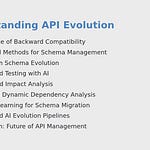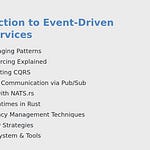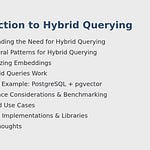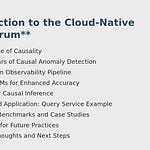Gather ’round, fellow backend aficionados! Picture this: your shiny new cloud-native API platform is humming along, traffic spiking at unpredictable hours, cost alarms blaring, and user experience teetering between “bliss” and “ouch.” You thought a static rate limit—say, “100 requests per second (RPS)”—would suffice. But static throttles either throttle too hard (angering paying customers) or too lightly (letting bills skyrocket). Enter adaptive rate limiting: the art and science of dynamically tuning throughput limits in real time, balancing performance, fairness, and cost.
In today’s deep dive, we’ll unpack how modern systems marry real-time cost signals with distributed state management, feedback control loops, and lightweight machine-learning tricks. By the end, you’ll have a clear blueprint—complete with code snippets—for building an API rate-limiter that scales, shares, and saves your budget. Let’s roll!
Understanding Rate Limiting: The Basics
Before we supercharge rate limiting with adaptivity, let’s revisit the foundations.
Rate limiting enforces a maximum request rate to prevent resource exhaustion and ensure fair usage. Two classic algorithms dominate the landscape:
• Token Bucket
• Sliding Window
Token Bucket allows bursts up to a bucket capacity, replenishing tokens at a fixed rate. Sliding Window tracks request counts over a rolling time window. Both can be implemented in-memory (single process) or backed by a distributed store like Redis for cluster-wide consistency.
Key properties any limiter must address:
Throughput: Maximum sustainable requests per second.
Fairness: Equitable share of capacity among tenants or API keys.
Cost alignment: Ensuring the system operates within budget thresholds.
Static limits lock these values at deploy time. Adaptive rate limiting, by contrast, adjusts refill rates, bucket sizes, or window spans on the fly—responding to traffic patterns, latency, error rates, and even your real-time billing data.
Integrating Cost Metrics into Throttling
Insight #1 tells us that weaving real-time cost metrics into our controllers unlocks smarter throttling. Rather than blindly capping at 100 RPS, we throttle such that projected billing stays within monthly budget targets. When cost burn accelerates, we trim capacity; when usage is well under budget, we safely open the faucet.
Mechanically, this requires:
• A cost pipeline: ingest meter-level metrics (e.g., cost per million requests) from your cloud billing API or custom collector.
• A budgeting controller: compares current spend rate vs. budget allocation.
• Throttling adjustments: modifies rate-limiter parameters (e.g., token refill rate) based on budget delta.
Pseudo-flow:
Pull costDelta = (actualSpend – budgetedSpend) over last interval.
If costDelta > 0 (overspend), reduce refillRate by factor α.
If costDelta < 0 (underspend), increase refillRate up to a max threshold.
This closed-loop control aligns throughput with budget, smoothing peaks and preventing over-provisioning costs.
Distributed State Management with Redis
Insight #2 reminds us that production-grade adaptive limiters gravitate toward Redis-backed sliding-window or token-bucket implementations. Redis provides:
• Atomic INCR/EXPIRE for sliding windows.
• EVAL scripts for token-bucket updates (token count, last update timestamp).
• Persistence for cross-instance throttling consistency.
Example: sliding window counter in Redis (Python with redis-py):
import time
import redis
r = redis.Redis(host='localhost', port=6379, db=0)
def allow_request(user_key, window=60, max_requests=120):
"""
Sliding window: at most max_requests per window seconds.
"""
now = int(time.time())
key = f"rl:{user_key}:{now // window}"
pipe = r.pipeline()
pipe.incr(key, 1)
pipe.expire(key, window + 1)
count, _ = pipe.execute()
return count <= max_requestsThis simple code ensures each user_key can issue up to 120 requests every 60-second block. By sharding counts into time buckets, it approximates a rolling window.
Extending Token-Bucket with Feedback Loops
Insight #4 shows how we can dynamically tune a token bucket by embedding feedback loops—think PID controllers or Exponentially Weighted Moving Averages (EWMA). The goal is to auto-adjust two parameters:
• Refill rate (tokens per second).
• Burst capacity (maximum tokens).
A minimal PID-style controller in Python:
import time
class AdaptiveTokenBucket:
def __init__(self, rate, burst, kp=0.1, ki=0.01, kd=0.05):
self.rate = rate # current tokens/sec
self.burst = burst # max tokens
self.tokens = burst
self.last = time.time()
# PID terms
self.kp, self.ki, self.kd = kp, ki, kd
self.integral = 0
self.prev_error = 0
def _update_tokens(self):
now = time.time()
delta = now - self.last
self.tokens = min(self.burst, self.tokens + delta * self.rate)
self.last = now
def allow_request(self, cost=1):
self._update_tokens()
if self.tokens >= cost:
self.tokens -= cost
return True
return False
def adjust_rate(self, error):
"""
PID adjustment: error = desired_qps - actual_qps
"""
self.integral += error
derivative = error - self.prev_error
delta = (self.kp * error +
self.ki * self.integral +
self.kd * derivative)
self.rate = max(0.1, self.rate + delta) # floor at 0.1
self.prev_error = error
Here, an external monitor measures actual throughput vs. target (could be cost-based target) and calls adjust_rate(error). The bucket self-tunes, expanding or contracting capacity as conditions change.
Adaptive Algorithms: Closed-Loop Control and Learning
Insight #5 reveals the bleeding edge: combining classical closed-loop algorithms (AIMD, PID) with lightweight reinforcement techniques (multi-armed bandits) and fair-queuing schedulers (DRR, weighted fair queueing).
• AIMD (Additive Increase, Multiplicative Decrease) mimics TCP: slowly add capacity on success, sharply cut on failure.
• Multi-armed bandits can experiment with different refill rates, quickly converging to optimal throughput under varying load patterns.
• Weighted deficit round-robin (WDRR) ensures per-tenant fairness by assigning each key a weight and cycling through queues.
Such hybrid designs achieve sub-second convergence to peak throughput, fair distribution, and cost-aware restraint—critical in microservices ecosystems with unpredictable spikes.
Putting It All Together: Sample Implementation in Python
Below is a simplified example that ties cost awareness, Redis state, and a feedback loop:
import time
import redis
# CONFIGURATION
API_COST_PER_REQ = 0.0005 # $0.0005 per call
BUDGET_PER_HOUR = 10 # $10 per hour
CONTROLLER_INTERVAL = 30 # seconds
# REDIS CONNECTION
r = redis.Redis()
# ADAPTIVE TOKEN BUCKET
class CostAwareLimiter(AdaptiveTokenBucket):
def __init__(self, *args, **kwargs):
super().__init__(*args, **kwargs)
self.last_controller = time.time()
def check_and_adjust(self):
now = time.time()
if now - self.last_controller < CONTROLLER_INTERVAL:
return
# 1. Pull cost usage from Redis (or billing API)
spent = float(r.get('api:cost') or 0)
elapsed_hours = (now // 3600) * 3600
budget = BUDGET_PER_HOUR
error = (budget - spent) / budget # positive if under budget
# 2. Adjust refill rate
self.adjust_rate(error * self.rate)
self.last_controller = now
def allow_request(self):
self.check_and_adjust()
allowed = super().allow_request()
if allowed:
# Increment cost ledger
r.incrbyfloat('api:cost', API_COST_PER_REQ)
return allowed
# USAGE
limiter = CostAwareLimiter(rate=50, burst=100)
def handle_request(user_key):
key = f"rl:{user_key}"
if limiter.allow_request():
# process the request
return "200 OK"
return "429 Too Many Requests"
In this snippet:
We model cost in Redis under
api:cost.Every
CONTROLLER_INTERVAL, we compare spent vs. budget, compute an error term, and invoke our PID controller to adjust the token refill rate.Each permitted request increments the cost ledger by
API_COST_PER_REQ.
This pattern—refill tuning via feedback, cost integration, and a shared Redis store—provides a blueprint for production-grade adaptive rate limiting.
Ecosystem and Services: Libraries and Cloud Provider Offerings
If you’d rather stand on the shoulders of giants, check out:
• limits (Python): Redis-backed sliding window and token bucket
• rate-limiter-flexible (Node.js): flexible window, token bucket with Redis support
• bottleneck (JavaScript): leaky bucket & priority queueing
• AWS API Gateway Usage Plans & Throttling (granular burst, per-API key quotas)
• Azure API Management (subscription-based quotas with policies)
• GCP Cloud Endpoints (global quotas, basic throttling)
While each offering has its strengths—AWS for fine-grained bursts, Azure for subscription tiers, GCP for simplicity—none yet fuse real-time billing signals or advanced closed-loop controls. That’s where custom middleware or open-source extensions come into play.
Wrapping Up
Adaptive rate limiting is no longer a “nice to have”—it’s essential for any cloud-native API aiming to balance user demands, operational fairness, and tight cost control. By integrating real-time cost metrics, leveraging Redis for distributed state, embedding feedback loops (PID/EWMA/AIMD), and even sprinkling in lightweight learning, you can build throttlers that:
• Auto-scale capacity up and down
• Enforce fair shares per tenant
• Keep your budget on a leash
The next time your scheduler console lights up with CPU alarms or you spot an unexpected billing bump, you’ll have the tools to dial in a self-tuning API gateway—no more wrench-turning in the dark.
Stay curious, code boldly, and see you again in tomorrow’s issue of The Backend Developers!
Warmly,
Your resident infrastructure tamer,
—The Backend Developers Team










